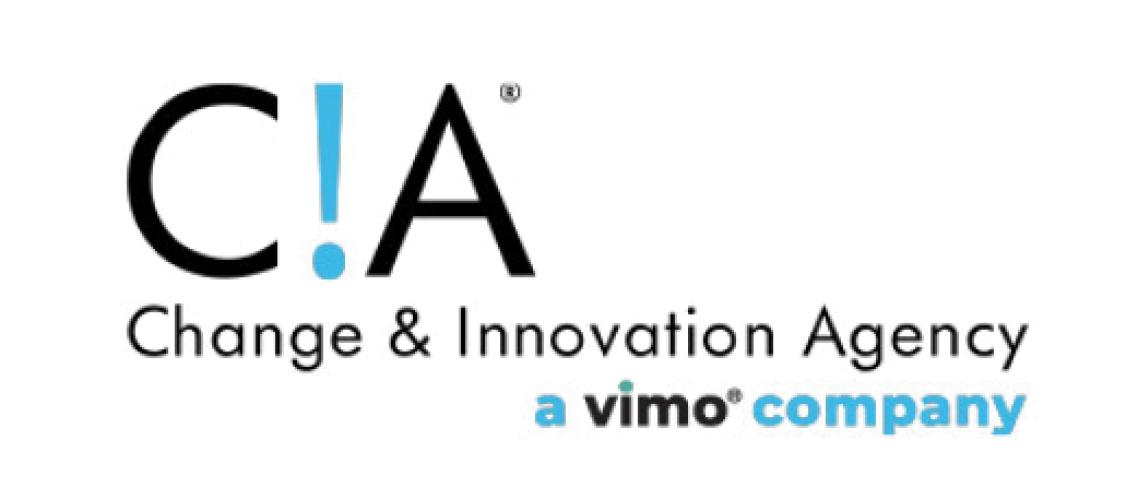NASWA Bulletin - January 30, 2015
In This Issue:
- Register Today for the 2015 NASWA Winter Policy Forum!
- Administration Set to Release Fiscal 2016 Budget
- Congressional Budget Office Releases Report on the Budget and Economic Outlook
- USDOL Announces Reduction in Veterans' Unemployment Rate
- House and Senate Committees Begin to Take Shape
- Ellen Marie Hess Named New Commissioner for the Virginia Employment Commission
- New Version of OccuCoder, ITSC's Job Matching Tool
- Unemployment Insurance Initial Claims and Continued Claims Decrease
- Notices, Advisories and Reports
Register Today for the 2015 NASWA Winter Policy Forum!
Online registration is still available for the upcoming 2015 NASWA Winter Policy Forum held in Washington, D.C., February 19-20, 2015 at the Hyatt Regency on Capitol Hill.
The NASWA room block at the Hyatt Regency is currently filled; however, if you need a hotel room, we encourage you to first contact the Hyatt Regency on Capitol Hill to check for additional availabilities or cancelations. If you have any difficulties in making hotel reservations, contact NASWA staff assistant Hillary Hewko at hhewko@naswa.org
NASWA’s annual Winter Policy Forum serves as the premier NASWA event for state workforce agency administrators and other workforce agency professionals to hear and discuss current economic conditions in the U.S. with national experts in the field, discuss the Workforce Innovation and Opportunity Act, and also learn about the legislative outlook on a variety of workforce system issues facing Congress.
NASWA's Board of Directors will meet on Wednesday, February 18, 2015 at the Hyatt Regency Washington on Capitol Hill prior to the Winter Policy Forum. For additional information on the Conference Agenda, Registration and other Conference items, please visit http://www.naswa.org/meetings/wpf2015/.
Administration Set to Release Fiscal 2016 Budget
The Administration is readying a fiscal 2016 budget, due Monday, February 2nd that would effectively end sequestration next year. It would increase discretionary spending by $74 billion – raising defense spending by $38 billion, to $561 billion, and non-defense accounts by $37 billion, to $530 billion, according to press reports.
The Administration says it would pay for the 7 percent increase by ending some tax loopholes and making unspecified spending cuts, although it has said the President will not seek entitlement reductions. While some Republican lawmakers in both chambers are calling for higher defense spending, most reject the idea of providing more funds for domestic programs or closing tax breaks to pay for the increased spending.
Efforts to replace sequestration with alternative deficit reduction have run into disagreements between the two parties over the appropriate approach. Democrats have urged higher tax revenue as part of the solution, while Republicans oppose tax increases and are focused on slowing the growth of mandatory spending through an overhaul of entitlement programs.
A two-year budget deal negotiated in December 2013 by House Budget Chairman Paul D. Ryan and Senate Budget Chairwoman Patty Murray provided some sequestration relief for the 2014 and 2015 fiscal years, temporarily putting the issue on the back burner. But, sequestration will be a major point of contention when Congress turns to the fiscal 2016 budget.
Congressional Budget Office Releases Report on the Budget and Economic Outlook
On Monday, January 26, the Congressional Budget Office (CBO) released The Budget and Economic Outlook: 2015 to 2025, which provides baseline projections of federal spending, revenues, deficits, and economic growth over the next 10 years. CBO expects the U.S. economy to grow at a solid pace in the next two years, with average GDP growth to be roughly 3 percent through 2017. CBO also projects the unemployment rate to fall from the 5.7 percent in the fourth quarter of 2014 to 5.3 percent in the fourth quarter of 2017. To access the CBO’s Budget and Economic Outlook report, please click here.
USDOL Announces Reduction in Veterans' Unemployment Rate
On January 23, 2015 the Secretary of Labor announced the veterans’ unemployment rate dropped to 4.7 percent in 2014 -- down from 5.5 percent in 2013. While the Secretary emphasized this reduction shows significant progress for veterans, he also noted that veteran homelessness is still a prominent problem across the country that will require special attention in 2015. The U.S. Department of Labor has pledged to work with leaders at all levels, in every community, to identify and disseminate best practices; coordinate resources from all corners of the federal government; and engage both private and public sectors and workforce and nonprofit organizations to end veteran homelessness. The Secretary of Labor’s press release can be accessed here.
House and Senate Committees Begin to Take Shape
Although both Republicans and Democrats are still assembling the House and Senate Committee Rosters for the 114th Congress which began in early January, several of the most critical committees affecting the workforce system are taking shape.
Significant changes will be seen on the Senate Committee on Appropriations as the newly constituted subcommittees will have significant turnover in the 114th Congress brought on by retirements, electoral defeats and members deciding to serve on other panels, according to assignments announced by Chairman Thad Cochran, (R-MS), on Thursday.
Several of the committees are listed below:
House Committee on Education and the Workforce
This committee, which authored the Workforce Innovation and Opportunity Act (WIOA), in cooperation with the Senate Committee on Health, Education, Labor and Pensions, will continue to be chaired by Rep. John Kline (R-MN). Rep. Bobby Scott (D-VA) will be the new Senior Democratic Member on the committee. The complete list of all committee and subcommittee members can be found here.
Senate Committee on Health, Education, Labor and Pensions
This committee, which is the counterpart to the House Education and Workforce Committee, will see several leadership changes with Senator Lamar Alexander (R-TN) taking over as the new Chairman and Senator Patty Murray (D-WA) taking over as the new Ranking Democratic Member. For a complete listing of the Subcommittees, please click here.
House Committee on Appropriations
This committee, which funds the Federal government, will continue to be chaired by Rep. Hal Rogers (R-KY). Rep. Nita M. Lowey (D-NY) will also continue to serve as the Ranking Democratic Member. Of particular interest, Rep. Tom Cole (R-OK) will be the new Subcommittee Chair of the Labor, Health and Human Services and Education Subcommittee. Rep. Rosa DeLauro (D-CT) will remain as Ranking Member on the Subcommittee. Republican Members of the Subcommittees can be found here. The Democratic Members of the Subcommittees can be found here.
Senate Committee on Appropriations
Earlier this year, Senator Thad Cochran (R-MS) assumed the chairmanship of the Senate Committee on Appropriations, and Senator Barbara Mikulski (D-MD) transitioned from her post as the chair of the Senate Appropriations Committee to her new role as the minority Vice Chairwoman. This week Chairman Cochran and Vice Chairwoman Mikulski announced the members for the 12 subcommittees that make up the Senate Committee on Appropriations. The Senators on the Subcommittees can be accessed here.
Ellen Marie Hess Named New Commissioner for the Virginia Employment Commission
On December 31, Governor Terry McAuliffe announced the appointment of Ellen Marie Hess as Commissioner for the Virginia Employment Commission. Ms. Hess was previously appointed Deputy Commissioner at the Virginia Department of Motor Vehicles (DMV) by Governor McAuliffe. She oversaw the agency's legislative, legal, and policy functions, as well as the Highway Safety Office. Ellen Marie has been with DMV since January 2008 and has more than 20 years' experience in policy and regulatory functions in state government. Prior to her service at DMV, she was the Director of Labor and Employment Law at the Virginia Department of Labor and Industry and a Staff Attorney with the Virginia Department of Taxation. She also gained private sector experience as In-house Counsel at Heilig-Meyers Furniture Company. Ellen Marie received a Bachelor's degree with Honors from Virginia Commonwealth University and a Juris Doctor from the University of Richmond.
New Version of OccuCoder, ITSC's Job Matching Tool
The ITSC provides technology services and support to state Unemployment Insurance agencies across the country. A new version of the ITSC’s job matching tool, OccuCoder v 2.3, is now available to all state workforce agencies. OccuCoder is a software tool developed by the ITSC through U.S. Department of Labor (USDOL) funding to code both unemployed job seekers and job openings with a standard occupational code. OccuCoder uses the O*NET job coding database of occupational information to attach a job code to unemployed job seekers to enable them to be quickly matched to current job openings that are also coded with the appropriate O*NET Code. The O*NET database contains information on hundreds of standardized and occupation specific job descriptions developed by the O*NET Center. For more information on OccuCoder or to demo the tool, click here.
What’s New in v 2.3?
- Updated to use O*NET 17.0 database
- Better Performance to extract occupational codes from longer job descriptions.
- Bright Outlook Jobs, a listing of occupations that are expected to grow rapidly in the next several years.
- Green Jobs, a listing of new and emerging occupations within green economic sectors.
- Military Occupational Classification (MOC) crossmatch.
- Support for Spanish Language – This feature was recently piloted by New Jersey and is in production. However, this support for Spanish has not been tested/piloted for batch processes.
How to Download?
The software is free to all state agencies. To receive the software, please contact Steve Hanle, the ITSC Web Administrator, at stephen.hanle@itsc.org with a request to access to the OccuCoder section of the ITSC website and instructions on how to download the OccuCoder software.
Need Support?
For maintenance and support to install or troubleshoot OccuCoder, there is an optional annual cost. For details on how to obtain maintenance and support for OccuCoder from ITSC, please contact John Quichocho, ITSC Product Manager, at (202) 650-5165 or jquichocho@naswa.org.
Unemployment Insurance Initial Claims and Continued Claims Decrease
The U.S. Department of Labor reported for the week ending January 24, 2015, seasonally adjusted unemployment insurance initial claims decreased from the previous week's revised figure. Seasonally adjusted initial claims decreased by 43,000 to 265,000 from last week's revised figure of 308,000. The 4-week moving average was 298,500, a decrease of 8,250 from the previous week's revised average of 306,750. The unadjusted initial claims level totaled 280,237 down 102,358 from the previous week, and down 77,569 from the level of 357,806 for a comparable week in 2014.
UI continued claims, seasonally adjusted, for the week ending January 17, 2015 were 2,385,000, down 71,000 from the previous week's revised figure. The 4-week moving average increased 8,250 to 2,438,500 from the prior week's revised figure of 2,430,250. The total number of individuals claiming benefits in all programs for the week ending January 10, 2015, was 2,961,887, a decrease of 87,774 from the prior week. Regular state continued claims decreased by 85,655, and EB decreased by 2. During the week of January 10, continued claims for ex-federal employees stood at 18,028 up 372 from the prior week, and newly discharged veteran at 25,618 up 1,154 from the prior week.
For the current week, initial claims exhibited a relatively large drop from the prior week. This is evident in the chart below. While the drop appears to be significant it is similar to drops in the same time frame in prior years which is demonstrated in the table below. In the table the relative change from week to week is shown for the years 2012 thru 2015, the 3 week average change is computed for each period. In the table, positive week to week changes indicate a drop in the number of claims.
Notices, Advisories and Reports
USDOL Directives & Releases
January 22, 2015: USDOL issued Unemployment Insurance Program Letter No. 10-15 ensuring states are aware of the locality-based salary rates for certain Federal civilian employees.
January 22, 2015: USDOL released Unemployment Insurance Program Letter No. 9-15 ensuring states are aware that: 1) the social security survivors and old age retirement annuities and the Federal civilian pensions annual cost-of-living adjustment (COLA) will increase for calendar year 2015, and 2) COLA information may be found on the U.S. Office of Personnel Management (OPM) Web site.
January 22, 2015: USDOL issued Unemployment Insurance Program Letter No. 8-15 ensuring State Workforce Agencies are aware of the Federal military retired pay annual cost of living adjustment (COLA) provided by the Department of Defense.
January 22, 2015: USDOL released Training and Employment Notice No. 18-14 informing state workforce agencies of the 2014 National Migrant and Seasonal Farmworker State Monitor Advocate Training, being held in Washington, D.C. at the U.S. Department of Labor from May 20 to May 22, 2014.
January 20, 2014: USDOL issued Unemployment Insurance Program Letter No. 7-15 announcing the rate of interest that the U.S. Department of the Treasury (Treasury) will charge on Title XII advances during CY 2015
For questions or comments, please contact NASWA Bulletin Editor Marc Katz at mkatz@naswa.org.

































